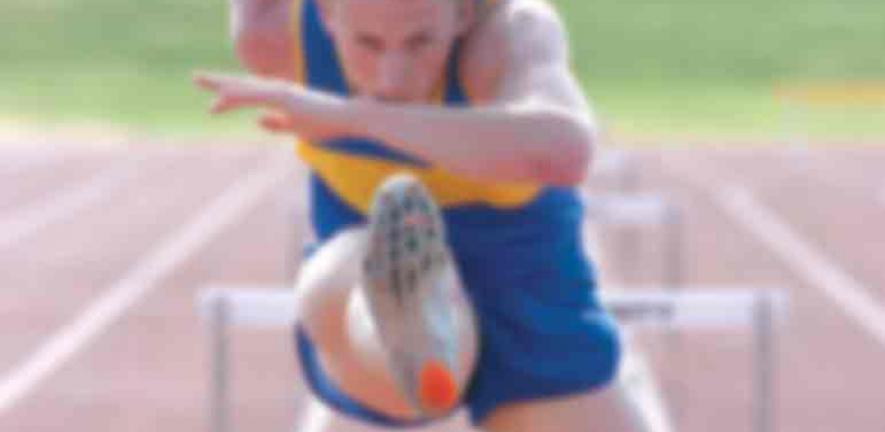
An ambitious research project headed by the University of Cambridge’s Computer Laboratory and Department of Engineering aims to revolutionise sports coaching using advanced sensor networks.
An ambitious research project headed by the University of Cambridge’s Computer Laboratory and Department of Engineering aims to revolutionise sports coaching using advanced sensor networks.
SESAME has no ambition to replace the coach. Rather, it seeks to assist them by providing new, relevant and timely data.
Dr Robert Harle
Have you ever wondered what makes an elite athlete? There are many important factors – natural aptitude, physical capabilities, and access to good facilities to name but a few. But these days there is also a team of coaches and sports scientists who work alongside an athlete to turn that tattered certificate from school sports day into the dazzling spectacle of an Olympic gold.
Sports science has moved the sporting world on significantly in the last few decades, with many of the advances driven by technology. Some changes are apparent to even the most casual observer – rubber running tracks, lighter racquets, aerodynamic suits. But behind the scenes, technology has been making an arguably bigger impact in coaching. It has allowed us to better understand physical actions (think slow motion video), the body’s response to training (think physiological monitors such as heart rate recorders) and to quantify those all-important tactics.
However technology for sports science is in its infancy. Much of it involves moving an athlete to a specialised environment; running on treadmills instead of tracks, cycling on machines not bikes. There is an unfortunate ‘Heisenberg effect’ that accompanies this – it is difficult to measure an athlete without affecting what he or she is doing. The result is that many of our elite athletes use only the eyes of their coach in training, making the odd visit to a sports science laboratory to check on progress. Naturally, the next step is to take the technology to the athlete.
Introducing SESAME
In 2006, a consortium comprising the University of Cambridge’s Computer Laboratory and Department of Engineering, UCL Computer Science Department, UWIC Sports Sciences Department, and the Royal Veterinary College was awarded a multi-million pound Engineering and Physical Sciences Research Council (EPSRC) grant for a project called SESAME (SEnsing in Sport And Managed Exercise).
SESAME is an ambitious four-year project that aims to use sensors both on and off the athlete to capture and present new performance data in near real-time. Crucially, the athlete will not be required to perform outside of their preferred environment or to use any performance-simulation machinery.
This new approach will permit SESAME to concentrate on the aspects of sporting performance that have proven hard to measure in a laboratory. Ever tried sprinting on a treadmill, for example? For safety reasons, we don’t recommend it! It is exactly this inability to simulate the performance of high-power, short duration events such as sprinting and jumping that limits sports science today.
SESAME will address this using a variety of sensors. Sensors in the environment will remotely track an athlete, training a range of synchronised high-speed video cameras on him or her and recording the data for immediate review. Sensors on the athlete – measuring limb speed, acceleration, position, and physiological signs – will be integrated into a local Body Sensor Network (BSN) transmitting data wirelessly to a nearby infrastructure and on to the coach and sports scientists. SESAME will gather, store and distribute an array of performance data, presenting it faster and in more detail than ever before.
In consultation with top coaches, the consortium will use its experience across research domains to build the system that coaches and athletes need. This brings with it many technical challenges. In gathering data, studies must be undertaken to understand which sensors are useful and reliable. Anything integrated on to the body must have low power consumption and be very small and lightweight as a typical sprint shoe weighs less than four AA batteries. The next challenge is to transfer the data from the BSN to the surrounding infrastructure in real-time, accurately time-stamping it and logging it to a permanent, secure record. Once that is in place, interest shifts to how this information is presented to coach and athlete in an efficient manner: an athlete may only have a minute to spare between repetitions, so he or she needs the information fast and in a digestible form.
The Impact of SESAME
To understand the role that the SESAME system might play, it is useful to understand the role of a good coach. Ultimately, this is to enable an athlete to perform at his or her optimum at a given time. It is tempting to imagine that a machine might be capable of this, but a cursory inspection of the literature will reveal the staggering complexity inherent in modelling a human, let alone in optimising their performance. In addition, the best coaches are those that recognise individuality – every athlete is different in stature and in their physical response to training – leaving no global optimum to seek. SESAME has no ambition to replace the coach. Rather, it seeks to assist them by providing new, relevant and timely data.
As an example, consider the way coaches today observe their charges. They watch from a variety of viewpoints, each carefully chosen to provide different information about the athlete’s technique. Naturally an athlete’s performance at the end of a session may be somewhat inferior to that at the beginning so coaches must decide whether the faults they observe are important errors or just signs of fatigue. The video recording aspects of SESAME can significantly contribute to this observation. By using multiple cameras placed at points chosen by the coach, many viewpoints may be gathered at once and synchronised to present them immediately following each repetition.
But this is only half the challenge. It is also likely that there will be no time to review this information in detail so SESAME must present the video in a useful format, with the salient features highlighted. To do this, researchers plan to integrate the data gathered by the BSN, which is used to spot oddities such as a bad contact, an unusual lean, or an anomaly in the motion and flag the corresponding video sequences. The coach and athlete will then be in a position to immediately review the highlighted oddities with a view to addressing their cause in the subsequent repetition, or review the entire video in slow motion if they wish.
After-the-event review is also possible. By data mining the extensive volume of data collected, scientists hope to spot comparable sessions in terms of speed, distance, or recovery and compare them to gain a profile of an athlete’s progress both individually and relative to others in the system.
There is little doubt that should SESAME achieve only half of the goals it has set, it will be a useful weapon in the arsenal of the modern day coach. And maybe – just maybe – it will contribute to a very golden 2012.
For more information, please contact Dr Robert Harle Robert.Harle@cl.cam.ac.uk
This work is licensed under a Creative Commons Licence. If you use this content on your site please link back to this page.





